The 7 Female Archetypes And What They Tell Us About Being A Woman
Though based on Greek mythology, these archetypes offer some interesting looks into the inner workings of modern femininity.
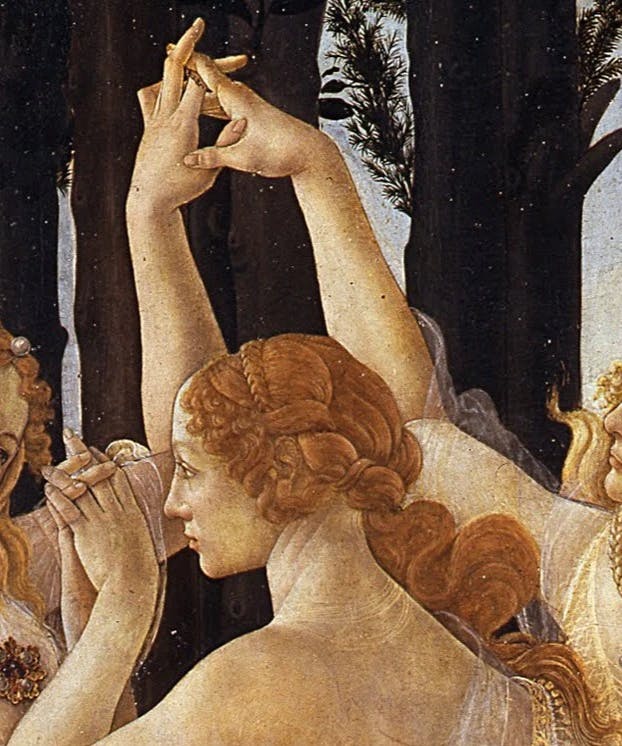
What does it mean to be a woman — to be feminine? These days, it’s becoming more difficult to determine as our culture attempts to broaden our definition of femininity. For much of history, to be feminine was synonymous with being tender, passive, and motherly. While these certainly are traditional aspects of femininity, there’s much more to being a woman.
Femininity is incredibly layered and complex. We see this broken down by psychiatrist and Jungian analyst, Jean Shinoda Bolen, in her book, Goddesses in Everywoman. Bolen uses seven classic Greek goddesses to illustrate the intricacies, nature, and behavioral patterns of femininity, and the many ways it can be expressed, making up the seven female archetypes, as listed below.
This offers us wonderful insight into the strengths and weaknesses of not only the women in our lives, but also ourselves — we each might be a mix of different archetypes or a clear-cut embodiment of one in particular. This helps us understand who we are or might become, who we don’t want to be, and how we can use our intrinsic nature for good.
Do you see yourself in any of these archetypes?
The Lover
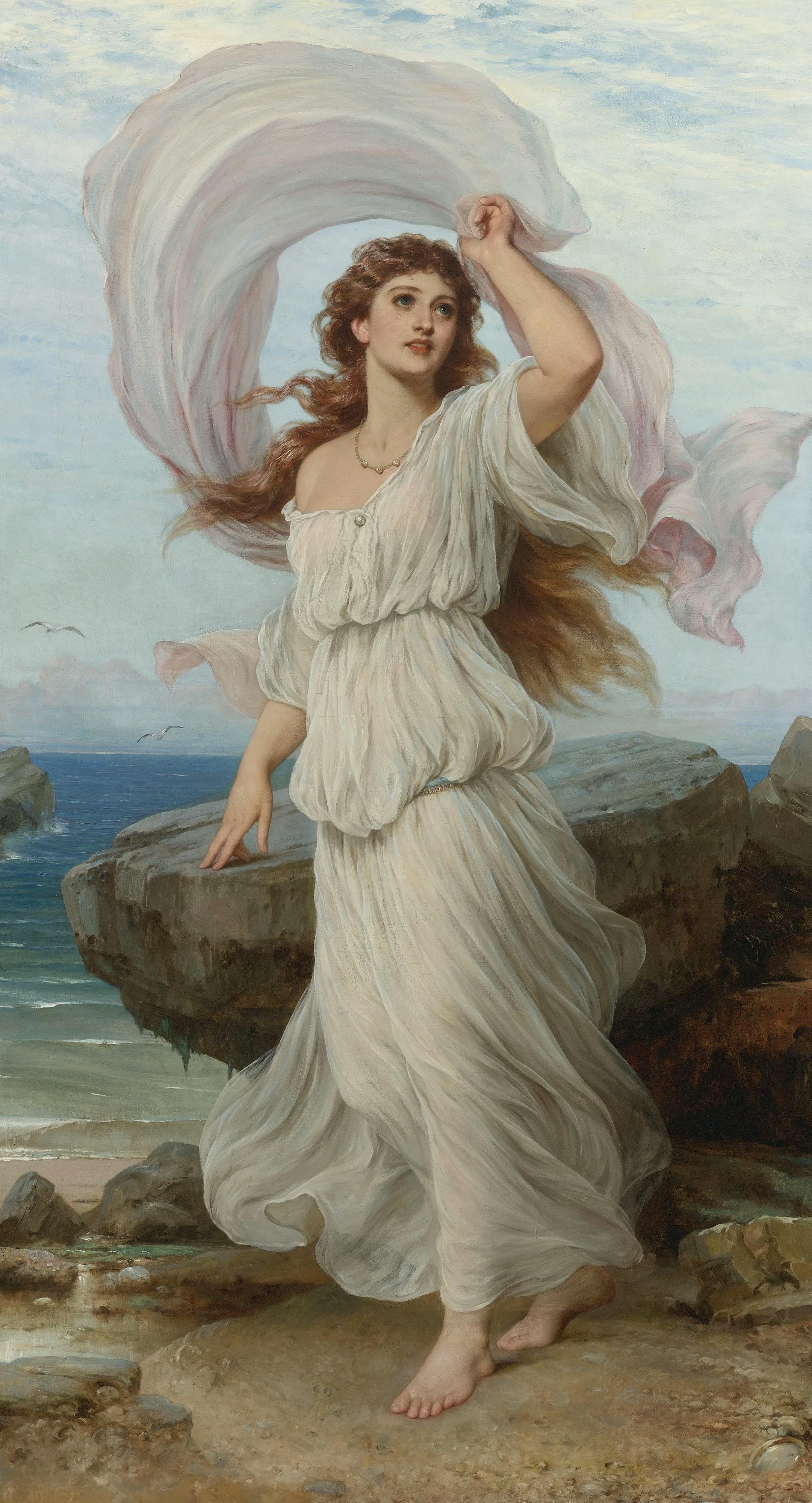
Miranda, by Thomas Francis Dicksee, 1895. Public domain via Wikimedia Commons.
Like Aphrodite, the goddess of beauty, passion, and fertility, the Lover is in touch with her desire to make an intense connection and her biological instinct to procreate. A charismatic, free-spirited, sensual woman, the Lover craves intimacy and thrilling relationships, thrives on creativity, and openly expresses her feelings.
The Lover is in touch with her desire to make an intense connection.
But if she’s not careful, the Lover might find that she allows her emotions to run wild, lacks focus, forges shallow relationships, and due to her fear of being alone, bases her self-esteem on what others think of her. Even worse, she might become vindictive if feeling rejected or use her sexuality to wield power, becoming the Temptress.
Contemporary examples: Elizabeth Taylor, Marilyn Monroe, Samantha from Sex and the City, Rose from Titanic
The Innocent Maiden
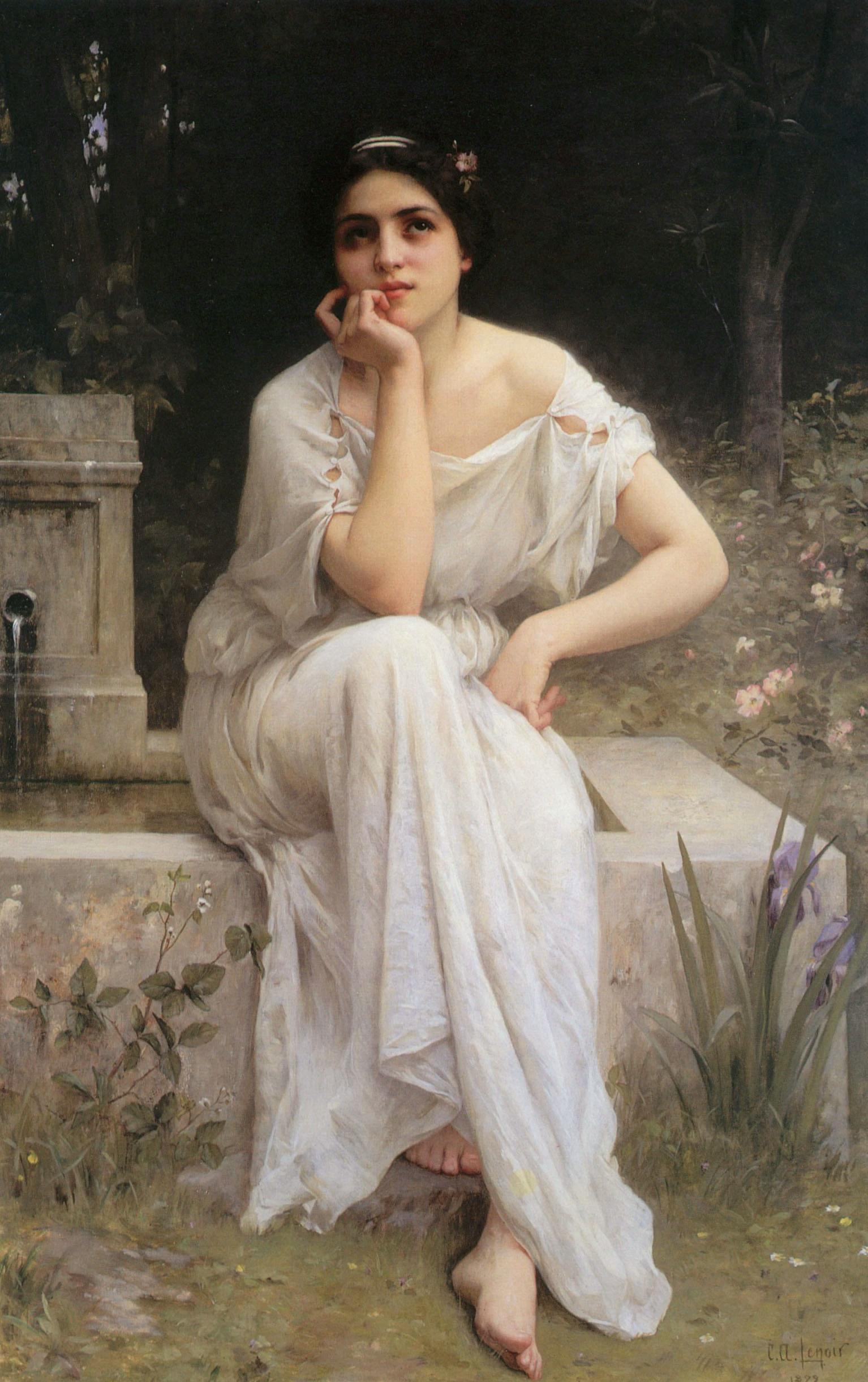
"Méditation," by Charles-Amable Lenoir, 1899. Public domain via Wikimedia Commons.
Based on Persephone, the queen of the Underworld, the Innocent Maiden embodies youth, purity, and sensitivity. Somewhat introverted, she’s deeply thoughtful and empathetic, sees the world through the wide, uncorrupted eyes of a child, and desires more from life. Though the Maiden has yet to claim her womanhood, she carries more inner strength that she knows.
The Innocent Maiden embodies youth, purity, and sensitivity.
An idealist in her heart, she unfortunately might fail to fully realize her dreams, instead being a little too passive. She also runs the risk of becoming someone who needs to be saved, allowing her motivation to come from a source other than herself. She’s vulnerable to getting stuck in an abusive relationship and can be easily manipulated, and she may attempt to break free from her innocence in ultimately damaging ways.
Contemporary examples: Snow White, Harriet Smith from Emma, Jane Eyre, Beth from Little Women, Bella Swan from Twilight
The Nurturing Mother
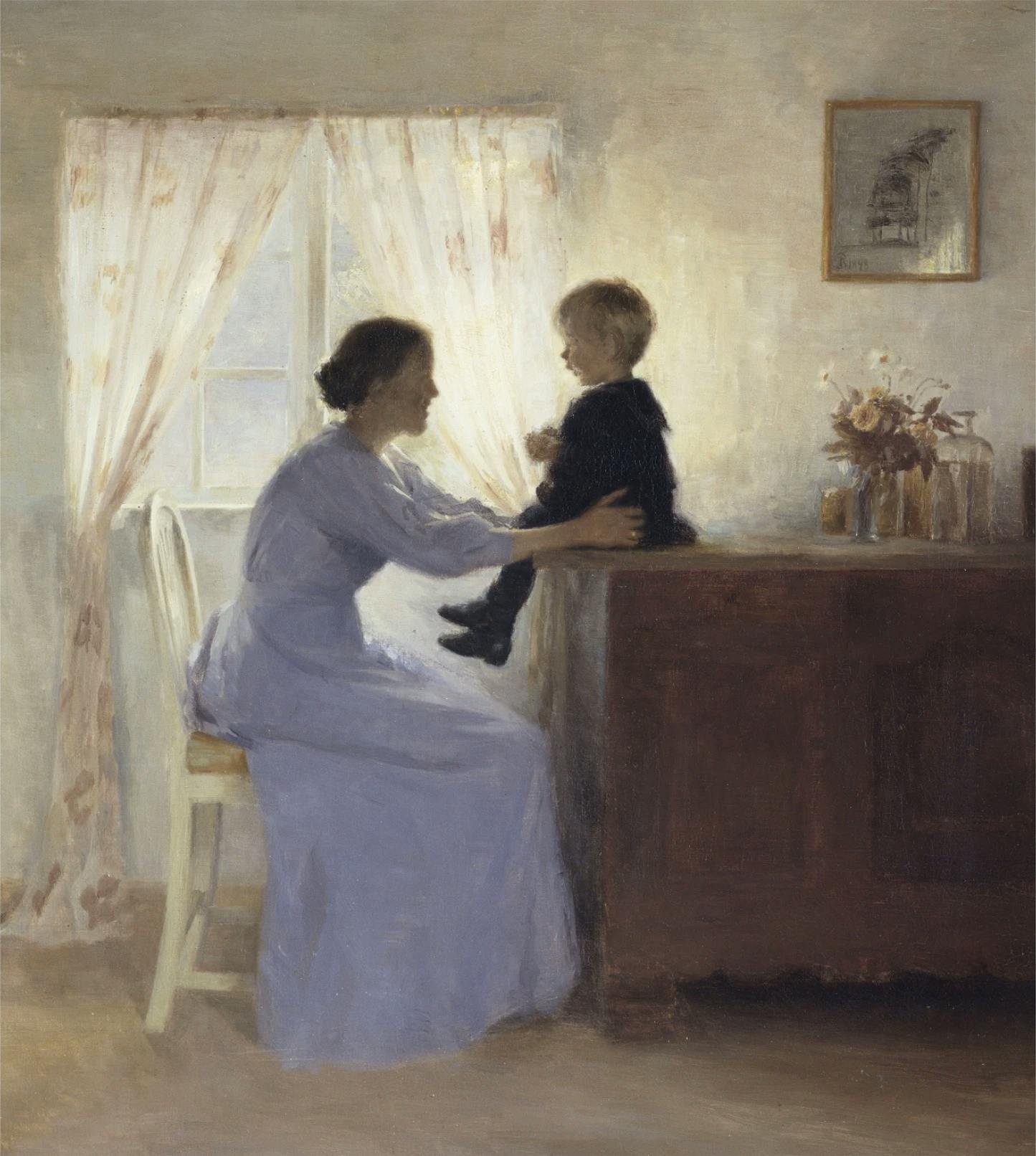
"Mother and child in an interior," by Peter Ilsted, 1898. Public domain via Wikimedia Commons.
Demeter, the goddess of the harvest, symbolizes a woman’s inherent motherly nature. The Nurturing Mother is, first and foremost, a caretaker. She sees offering love and safety to others as her true calling, possesses a strong protective instinct, seeks to cultivate deep familiarity in her relationships, and always has kind words to soothe her loved ones.
She sees offering love and safety to others as her true calling.
However, the Nurturing Mother may run into issues when she continuously puts others’ needs before her own, loses her sense of self, allows others to easily abuse her giving nature, and may become too controlling of her loved ones, becoming what is known as the Devouring Mother.
Contemporary examples: Molly Weasley from Harry Potter, Carol Brady from The Brady Bunch, Marmee from Little Women, Mary Poppins
The Queen
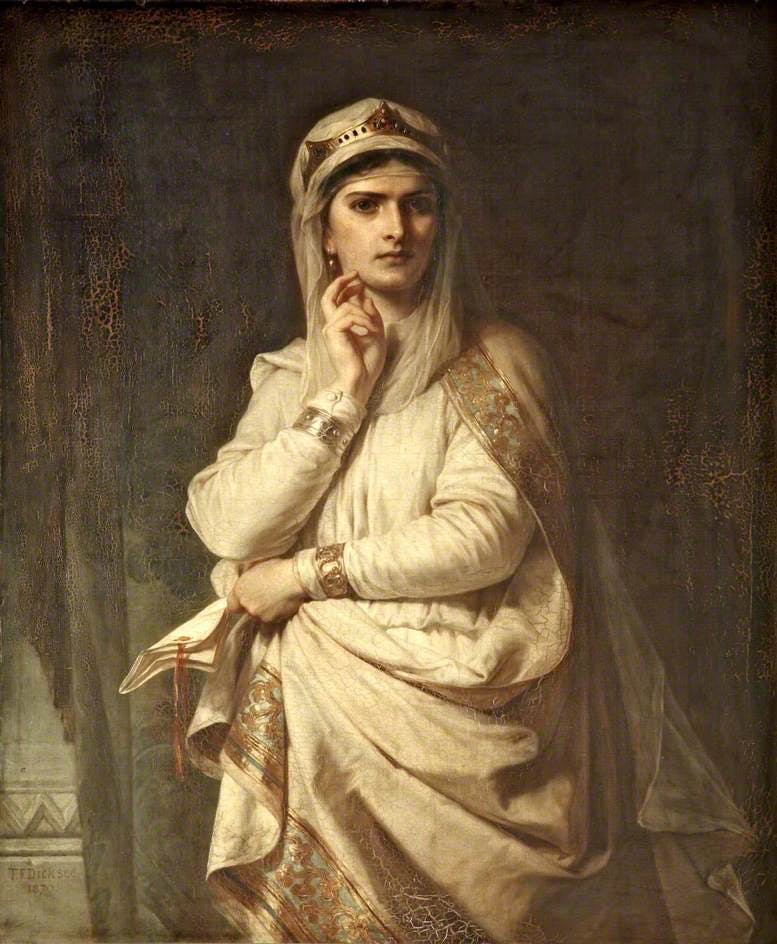
"Ideal Portrait of Lady Macbeth," by Thomas Francis Dicksee, 1870. Public domain, via Wikimedia Commons
Based on Hera, the goddess of marriage, the Queen represents a woman’s strong allegiance to duty, propriety, and natural leadership. She’s unapologetically confident, highly extroverted, and deeply committed to her partner and takes the significance of marriage quite seriously, making the perfect queen to her king.
The Queen represents a woman’s strong allegiance to duty, propriety, and natural leadership.
But the Queen has a dark side. Her idealization of commitment makes her feel incomplete without a man by her side, prone to jealousy, and often unable to bond closely with other women, seeing them as a threat to her throne.
Contemporary examples: First Lady Nancy Reagan, Emma from Emma, Princess Leia from Star Wars, Emily Gilmore from Gilmore Girls
The Huntress
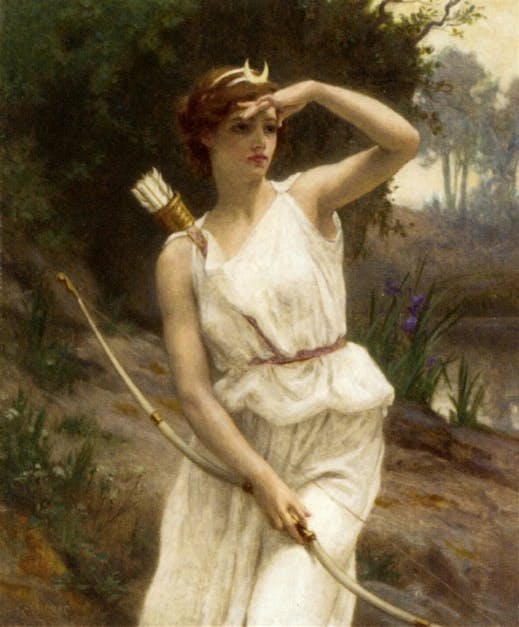
"Diana the Huntress," by Guillaume Seignac. Public domain via Wikimedia Commons.
Inspired by Artemis, the goddess of the hunt, this archetype illustrates a woman’s innermost desire to act with independence, achieve great things, and diligently focus on the goals she’s most passionate about. Easily the embodiment of female dominance, success, freedom, and fearlessness, the Huntress possesses many qualities to look up to.
This archetype illustrates a woman’s innermost desire to act with independence and achieve great things.
While the Huntress does feel a special kinship with other women, she also comes with her drawbacks — she may have trouble fitting someone else into her full life, can become emotionally distant, and place too much importance on achievements.
Contemporary examples: Serena Williams, Katniss Everdeen from The Hunger Games, Wonder Woman, Merida from Brave
The Wise Woman
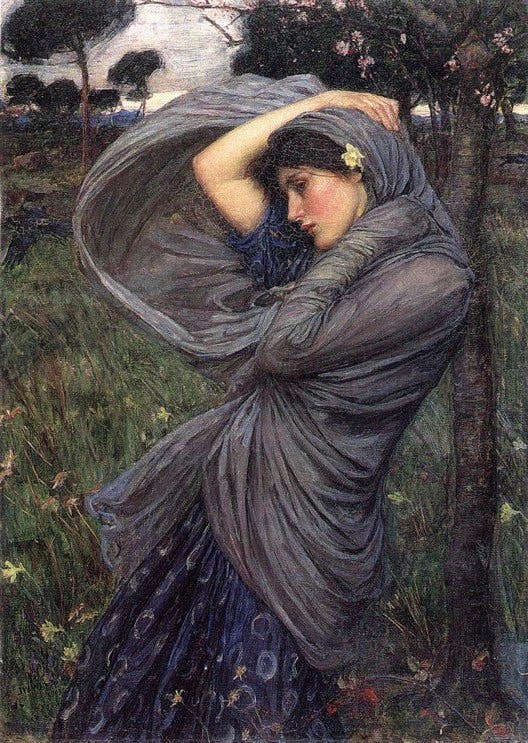
"Boreas," by John William Waterhouse, 1903. Public domain via Wikimedia Commons.
Based on Athena, the goddess of wisdom, the Wise Woman is the picture of poise and values deep knowledge, great discipline, and strategy above all else. She seeks to know more, always choosing to listen to her head instead of her heart, prizes her emotional objectivity and critical thinking, and may feel more comfortable with men than with women.
The Wise Woman is the picture of poise and values deep knowledge.
Unfortunately, the Wise Woman often lacks female kinship, fails to invest in her emotional intelligence, has little patience for idealists and whatever else she considers frivolous, and can come across as unfeeling.
Contemporary examples: Margaret Thatcher, Olivia Pope from Scandal, Miranda Priestly from The Devil Wears Prada
The Mystic
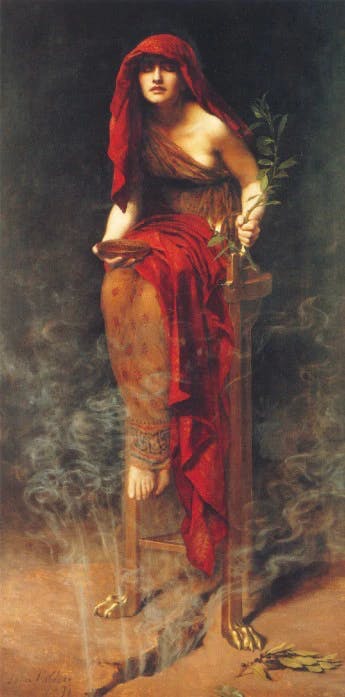
"Priestess of Delphi," by John Collier, 1891. Public domain, via Wikimedia Commons.
Hestia, the goddess of the hearth, is the inspiration for the Mystic woman, an archetype that symbolizes a woman’s yearning to cultivate an inner peace, one that strives to find home within herself. Often rather introspective and intuitive, the Mystic woman naturally leans into her spiritual side, avoids the spotlight, and carries the gravitas of an old soul.
The Mystic woman carries the gravitas of an old soul.
Her shortcomings, however, intertwine with her strengths — she’s too introverted at times, especially with her emotions, leading others to overlook her or to see her as too distant.
Contemporary examples: Oracle from The Matrix, Phoebe from Friends, Belle from Beauty and the Beast, Scarlet Witch from Avengers
Closing Thoughts
Though there may be some universal feminine experiences, each woman is unique in her femininity, possessing different temperaments, ambitions, gifts, and shortcomings. These seven archetypes can better help us understand our needs, innermost desires, weaknesses, and motives, offering us a look into the vast, varying nature of femininity and its patterns.